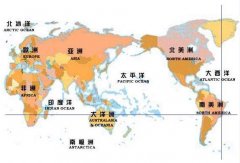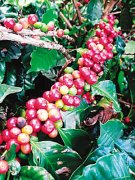The production of coffee, the planting technology of coffee manor.
Arabica coffee and Robbite coffee are harvested once every 3 to 4 years, and their lifespan varies due to different production conditions and different degrees of care (usually 20 to 30 years, after which they have to be replanted). Both varieties need plenty of sunlight and moisture. Arabica coffee trees like the seasonal climate of 15-24 ℃, while Robbins prefer the warm equatorial climate, where the temperature greenhouse is in the range of 24-29 ℃. When the temperature drops below zero, both kinds of trees freeze to death (although Arabian coffee trees are hardy), and they need about 152.4 centimeters of rainfall each year.
The traditional method of growing coffee trees is to plant trees of similar varieties near them in order to shade the coffee trees and protect their fruits from strong light. In addition to reducing the damage caused by direct exposure to the sun, this also helps to retain moisture in the soil. Irrigation and the use of chemical fertilizers are more modern methods, but they require financial input, which requires that yields and their income must be cost-effective, so they are used only in commercial plantations.
Coffee can be grown on vast estates, farms of different sizes, or on small plots of land opened up in forests or farms. For example, in Brazil and Guatemala, many large estates are dedicated to growing coffee, and in Brazil, more and more people are using mechanical harvesting. Large-area farming has high yields, but also high inputs and costs; small-scale farms have small yields but lower costs.
After 3 or 4 years of growth, the coffee tree grows and begins to bear fruit, with one fruit arranged in clusters or clusters along the branches.
The ripening period of most Arabica coffee beans is 6-8 months, while that of Robbins is 9-11 months. Therefore, although in some countries where the dry and wet seasons are not obvious, such as Colombia and Kenya, there are two flowering periods a year, that is, two harvests, but strictly speaking, there is only one ripening period a year.
Due to different regions, the harvest time is also different. Regions north of the equator (such as Ethiopia and Central America) are generally harvested from September to November. In areas south of the equator (such as Brazil and Zimbabwe), although the harvest can last until August, the main one is in April or May. Countries in the equatorial region, such as Uganda and Colombia, can harvest all year round, especially those plantations that can make good use of different elevations. As a result, there may be new coffee beans for most of the year.

Important Notice :
前街咖啡 FrontStreet Coffee has moved to new addredd:
FrontStreet Coffee Address: 315,Donghua East Road,GuangZhou
Tel:020 38364473
- Prev

Papua New Guinea Fine Coffee Black Coffee
Boutique coffee has a rich and beautiful taste. Even if the coffee made of boutique coffee beans is not all fine coffee, it depends on whether it gives full play to the characteristics of coffee beans, whether it has a good taste, if not, it can not be called boutique coffee. The legendary background of modern coffee. In Papua New Guinea (Papua New Guinea), about 75
- Next

Yunnan coffee Yunnan also has fine coffee Yunnan races
The term "fine coffee" was first put forward by Ms. Knudsen of the United States in Coffee and Tea magazine. At that time, Ms. Knudsen, as a coffee buyer at B.C. Ireland in San Francisco, was very dissatisfied with the neglect of the quality of raw coffee in the industry, and even some big roasters mixed a large amount of Robesda beans in the comprehensive beans, so she put forward the concept of boutique coffee.
Related
- Does Rose Summer choose Blue, Green or Red? Detailed explanation of Rose Summer Coffee plots and Classification in Panamanian Jade Manor
- What is the difference between the origin, producing area, processing plant, cooperative and manor of coffee beans?
- How fine does the espresso powder fit? how to grind the espresso?
- Sca coffee roasting degree color card coffee roasting degree 8 roasting color values what do you mean?
- The practice of lattes: how to make lattes at home
- Introduction to Indonesian Fine Coffee beans-- Java Coffee producing area of Indonesian Arabica Coffee
- How much will the flavor of light and medium roasted rose summer be expressed? What baking level is rose summer suitable for?
- Introduction to the characteristics of washing, sun-drying or wet-planing coffee commonly used in Mantenin, Indonesia
- Price characteristics of Arabica Coffee Bean Starbucks introduction to Manning Coffee Bean Taste producing area Variety Manor
- What is the authentic Yega flavor? What are the flavor characteristics of the really excellent Yejasuffi coffee beans?

